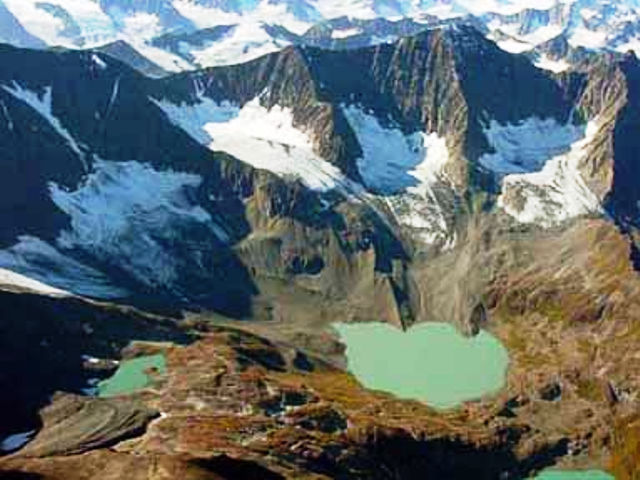| Date | May 2012 | Marks available | 2+2+2 | Reference code | 12M.2.bp.5 |
| Level | SL and HL | Paper | 2 | Time zone | |
| Command term | Explain | Question number | 5 | Adapted from | N/A |
Question
The photograph shows a periglacial landscape in southern Iceland.

[Source: Copyright Bruce Molnia, Courtesy Earth Science World Image Bank (http://www.earthscienceworld.org/images)]
Briefly describe two erosional landforms shown in this photograph.
Explain three ways in which the characteristics of periglacial environments hinder resource development.
With reference to one or more extreme environments, discuss whether human activities can be sustainable.
Markscheme
Award 1 mark for correctly naming an erosional landform with a further 1 mark for a matching description.
Landforms include: corries, arête, pyramidal peak, u-shaped valley (which counts only as the name, not the description).
Resource development in periglacial environments is hindered by:
- low temperatures that reduce plant growth and make the working environment difficult
- low temperatures that make it difficult/expensive to provide services such as water and sewage disposal
- long hours of darkness in winter that limit plant growth and affect human disposition (biometeorology)
- some machines having to be kept running the whole time in winter or they shut down
- vehicles needing to be equipped with special wheels to deal with the snow and ice in winter
- thawing of permafrost causing subsidence – the weight of vehicles or buildings may cause subsidence too.
Award 1 mark for each valid characteristic and 1 mark for an explanation.
Extreme environments are characterized by very low population densities. They are generally relatively inaccessible and tend to be viewed as inhospitable to human habitation. Despite this, they provide numerous opportunities for settlement and economic activity.
Agriculture can be sustainable, as long as the carrying capacity of the land is not exceeded. In some areas, this means migrating with herds rather than practising sedentary farming. Tourism offers some possibility for sustainable economic activity, especially in hot areas. However, water shortages may be an issue. Mineral development is unsustainable but can be used as a catalyst for economic development.
Answers should show a good understanding of sustainability.
Answers accessing markbands E/F should include located examples and a range of human activities.
Marks should be allocated according to the markbands.
Examiners report
The command term was "describe", not "explain". Many candidates identified landforms correctly, but failed to describe them.
There were some very strong answers to this question.
There were some sound discussions. Weaker responses tended to be descriptive, did not show a good understanding of sustainability and failed to look at specific human activities.

